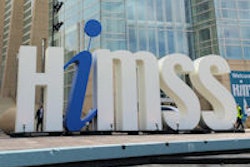
It's hard to find any institution that enjoys relying on CDs for image sharing purposes, but is everyone doing their part to usher in the new era of electronic image transmission? If research from MD Anderson Cancer Center is any indication, it doesn't appear that way.
In a review of almost 35,000 outside CT studies added to MD Anderson's PACS network, researchers found that nearly two-thirds had incomplete identification of the imaging study's originating organization and address in their DICOM headers. This lack of information could have a real clinical impact, said Dr. Kevin McEnery in a talk at the recent RSNA 2014 meeting.
"While this certainly does not impact the ability to transfer images to PACS, it does impact the continuity of care when the need for additional [prior] studies becomes apparent or reports need to be located," he said.
Inconsistent identification
The DICOM standard has been a big success, providing interoperability for the exchange of image data and allowing the display of information across different institutions and between PACS from different vendors. It also enables the electronic transmission of images between systems, McEnery said.
There is an issue, however, with the goal of eliminating the use of CDs for image sharing in favor of electronic transmission. Many institutions have invested advertising dollars in the CD labels, yet spent little time ensuring the consistency of the information on the images themselves.
Electronic image transfer potentially offers the ability to create a complete collection of all patient information, regardless of where it resides. All institutions must assume that their imaging studies will be transferred to another PACS at some point, McEnery said.
"The transition away from recordable media makes it imperative for organizations to ensure that their name and address is correct on the DICOM header and not just on the little sticky that goes on top of the disk," he said. "A lack of precise information will predictably lead to an inability to find and locate necessary information to get a complete picture [of a patient]."
McEnery and co-author Habib Tannir sought to determine the consistency of institutional naming identification -- as stored in the DICOM header tags Institution Name (0x00080080) and Institution Address (0x00080081) -- for external CT studies that had been presented for storage in MD Anderson's PACS. The analysis included studies performed between January 1, 2013, and April 1, 2014.
Studies that had been performed before January 1, 2013, but were uploaded after that date were excluded from the analysis. The researchers analyzed the DICOM header information after it was abstracted into an SQL database.
Of the 34,829 CT studies, 32,689 (93.5%) were from the U.S., while 2,140 (6.5%) came from outside the country.
The DICOM header tags contained the following, the researchers found:
- Institution only: 22,287 (63.99%)
- Institution name and address: 12,221 (35.09%)
- Blank institution name and address: 296 (0.85%)
- Address only: 25 (0.07%)
Name and address information was inconsistent even within the same organization.
"Institutions were naming their modalities differently across the institution, using multiple different names across the institution," he said. "I will tell you, MD Anderson is guilty of this, so I'm not throwing a hand grenade out. I live in a glass house on this one."
For some, the institution's name was consistent but the address information was different depending on the modality used.
McEnery acknowledged several limitations to the analysis. The assessment was limited to determining whether information was present and did not include the accuracy of that information. In addition, the study sample does not represent the state of DICOM information across the country and world.
"However, we do have samples from across the country and the world, and it's a substantive sample size," he said.
McEnery also noted that the analysis involved a population of only oncology patients, which might add bias to the study.
Solving the problem
The study results show that institutions should review the consistency of institutional identification in DICOM header tags, according to McEnery.
"I suspect that many are not aware of this inconsistency," he said.
Institutions should standardize institutional name information in their DICOM tags; at a minimum, city and state information should accurately appear in the address tag.
Other options include hosting a patient-centric identity service through the Integrating the Healthcare Enterprise (IHE) Cross-Enterprise Document Sharing (XDS) format, he said.
The DICOM Study Instance Unique Identifier (SUID) format could also be employed. SUID information, which contains unique identification for each institution, could be aggregated. A cloud service could also be created -- with oversight from RSNA or the American College of Radiology -- to provide lookups of institution origination based upon SUID information and mitigate the need for the DICOM institutional name and address header fields.
The solution, however, "is for each institution to take responsibility for this information and make it accurate," McEnery said. "That's what's best for our patients."
DICOM has provided the standard to facilitate successful transfer of image studies via CD-based media or direct electronic transfer. However, inconsistency within DICOM header elements adversely effects interoperability across healthcare enterprises, he said.
"Migration away from recordable media makes it imperative for organizations to validate header identification," he said.



















